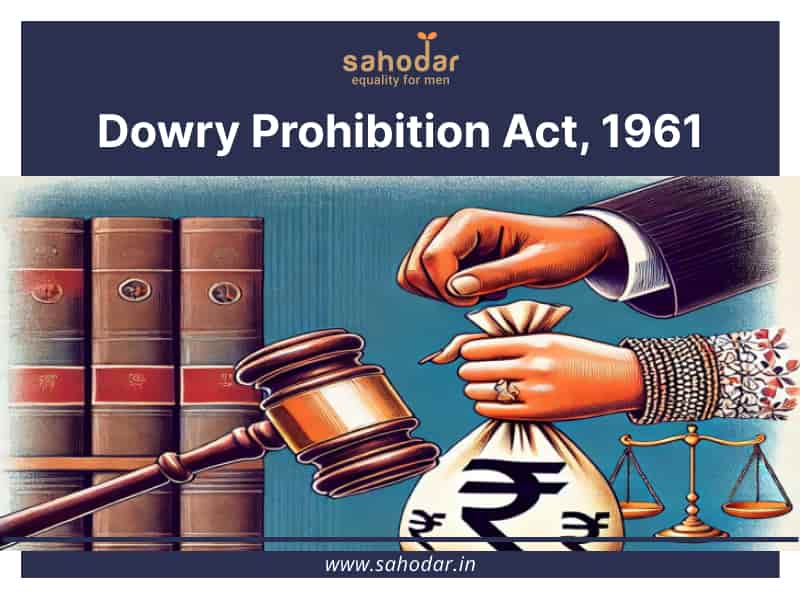The Dowry Prohibition Act of 1961 represents a historic attempt by the Indian legislature to address and eliminate the dowry system. This social custom has led to significant discrimination and abuse, particularly against women. Enacted to curb giving or receiving dowry in marriages, the Act outlines punishments for violators and attempts to reshape societal norms around marriage.
Background and Context of the Dowry System in India
The practice of dowry—initially a gift provided voluntarily by the bride’s family—has long roots in Indian culture. Over centuries, however, this tradition became exploitative, with demands and expectations increasing, often leading to harassment, financial burdens, and, in severe cases, dowry-related violence and deaths. These dire consequences led to the enactment of the Dowry Prohibition Act in 1961, which aimed to combat this social menace legally.
Key Provisions of the Dowry Prohibition Act, 1961
Definition of Dowry Act (Section 2)
The Act defines dowry under Section 2 as “any property or valuable security given or agreed to be given either directly or indirectly” by:
- The bride or her family to the groom or his family or
- The groom or his family to the bride or her family.
This definition covers all assets, including cash, property, and valuable items exchanged in connection with a marriage.
Prohibition of Dowry Act (Section 3)
Under Section 3, the Act makes giving and taking dowry punishable. This includes any agreements made before marriage. Violators face:
- A minimum of five years of imprisonment, and
- A fine of Rs. 15,000 or the equivalent of the dowry received, whichever is higher.
This provision applies to both parties involved in the transaction, intending to discourage dowry practices from both sides.
Penalties for Demanding Dowry (Section 4)
The Act addresses the act of “demanding” dowry, making it a punishable offence regardless of whether the dowry has been received. Anyone found guilty of demanding dowry can face:
- Imprisonment of up to five years, and
- A fine of Rs. 10,000.
This clause is significant as it addresses the coercive aspect of dowry demands, which may happen even after marriage.
Ban on Dowry Advertisements (Section 4-A)
Section 4-A prohibits any advertisement, publication, or notice that offers or invites dowry. This includes advertisements for marriage proposals highlighting wealth, properties, or other valuables as marriage prerequisites. Violations are punishable by imprisonment for up to five years and fines of Rs. 15,000.
Amendments and Legal Enhancements to the Dowry Prohibition Act
Recognizing the persistence of dowry practices despite legal prohibitions, the Act was amended in 1984 and 1986. These amendments strengthened the law, offering broader protections and making dowry-related crimes easier to prosecute.
The 1984 Amendment
The 1984 amendment introduced:
- Enhanced punishments for dowry-related offences, raising the minimum fines and terms of imprisonment.
- Empowered government officials with greater authority to act against dowry-related offences, allowing them to initiate cases without a formal complaint.
The 1986 Amendment
In 1986, another amendment aimed to strengthen the law further:
- Introduced Section 498A to the Indian Penal Code (IPC), making harassment or cruelty related to dowry a cognisable and non-bailable offence.
- Dowry-related deaths, categorised as “dowry death” under Section 304B of the IPC, carry a minimum sentence of seven years and may extend to life imprisonment.
- Allowed the victim’s family members or any third party to report dowry-related offences, thus broadening the scope for legal action.
Legal Recourse and Complaints under the Act
- Complaint Mechanism and Investigation Process: The Act enables the victim, any relative, or even a public official to file a complaint regarding dowry demands or harassment. Police officers can investigate complaints without the need for prior permission from a magistrate, making it easier to pursue cases of dowry-related abuse.
- Role of Dowry Prohibition Officers: Appointed under the Act, Dowry Prohibition Officers are responsible for preventing dowry practices and investigating cases. They are granted authority to inspect records and seize any dowry-related documents or items, providing additional support to victims.
- Social Impact and Challenges in Enforcement: Despite legal provisions, dowry remains prevalent in India due to socio-cultural factors and ineffective enforcement. Some of the significant challenges include:
- Socio-Cultural Acceptance: Dowry has deep-rooted acceptance in many parts of Indian society. The reluctance to challenge cultural norms, especially in rural areas, hinders the Act’s effectiveness.
- Social Stigma and Fear of Reprisal: Victims and their families often face societal pressure, with concerns about reputation or backlash from the groom’s family. This discourages many from reporting dowry demands or harassment.
- Misuse of the Act: Cases have emerged where individuals misuse dowry laws for personal revenge or to make false claims. Although not widespread, such misuse has led to scepticism toward genuine complaints, complicating the Act’s enforcement.
- Legal Delays: Lengthy court processes and delays discourage victims from seeking justice. Special courts have been proposed to expedite dowry cases, although they are not yet widely implemented.
Proposed Reforms and Future Directions
Raising Public Awareness
To make the Act effective, the government and NGOs can play a critical role by educating communities about dowry laws and advocating for dowry-free marriages.
Streamlining Legal Processes
Establishing special courts to handle dowry cases could ensure faster justice, strengthening the law’s deterrent effect.
Stronger Support for Victims
Providing legal aid, psychological counselling, and financial assistance to dowry victims could encourage more women to come forward and report dowry-related abuses.
Conclusion
The Dowry Prohibition Act of 1961 was a critical step towards eradicating dowry, but its success has been limited due to enforcement challenges and deep-seated cultural norms. Amendments have strengthened the law, but further reforms and societal efforts are required to eliminate dowry practices from Indian society. Addressing the root causes of dowry and reshaping societal attitudes are crucial to ensuring that dowry does not continue to harm future generations.

